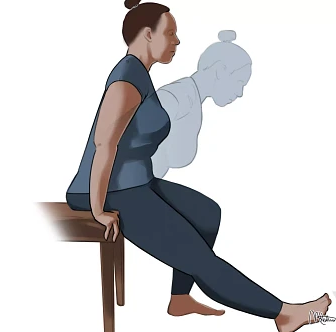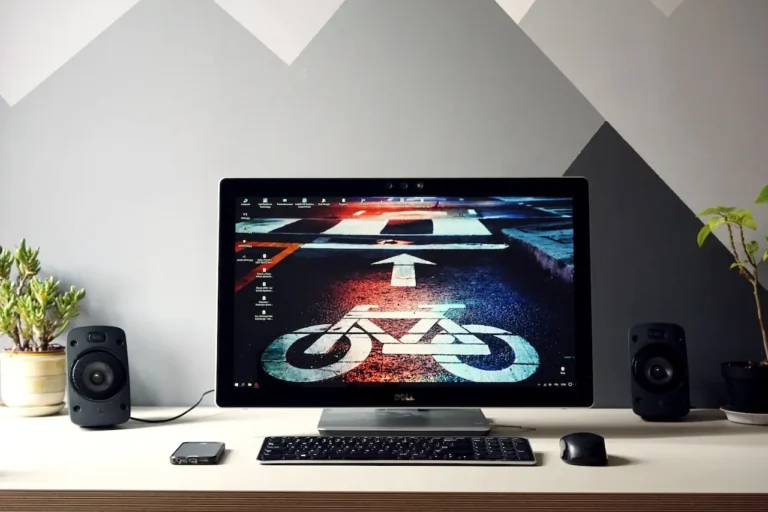Sciatica No More: 4 Exercises for Sciatica Pain for Seniors!
Are you tired of waking up to that searing pain in your lower back and legs every morning? Do you feel limited in your daily activities due to sciatica pain?
If so, you’re not alone.
Sciatica is a common condition that affects millions of seniors worldwide. However, the good news is that you can alleviate the pain and discomfort associated with sciatica through regular exercises.
In this blog post, we will introduce you to four Exercises for Sciatica Pain for Seniors that have been proven to work wonders. But before we dive into the exercises, let’s first understand what sciatica is and what causes it.
What is Sciatica?
Sciatica is a condition that occurs when the sciatic nerve, which runs from your lower back to your feet, becomes compressed or irritated. This can cause a sharp, shooting pain in your lower back and legs, making it difficult to sit or stand for extended periods. Common causes of sciatica include herniated discs, spinal stenosis, and degenerative disc disease.
Now that we know what sciatica is and what causes it, let’s focus on how you can alleviate the pain with the help of exercises. These four exercises are specifically designed for seniors, taking into account their age and physical limitations. We guarantee that with consistent practice, you will be able to say goodbye to sciatica pain for good. So what are you waiting for? Let’s get started on your journey toward a pain-free life!
Where is the Sciatic Nerve Located?
The sciatic nerve is the largest nerve in the human body, and it runs from the lower back down to the legs and feet. It’s made up of several smaller nerves that branch out from the spinal cord and travel through the buttocks and down each leg. So, when you’re feeling that pain in your leg, it could actually be caused by a problem in your back.
Is Sciatica Common in the Elderly?
Yes, sciatica is quite common in the elderly. As we age, the discs in our spine start to wear down and can put pressure on the sciatic nerve. Also, conditions like arthritis and osteoporosis can cause spinal changes that can lead to sciatica pain.
What Causes Sciatica in the Elderly?
There are several causes of sciatica pain in the elderly, but the most common ones are spinal stenosis, herniated discs, and degenerative disc disease.
Spinal stenosis is a condition where the spinal canal narrows, putting pressure on the sciatic nerve. Herniated discs occur when the discs between the vertebrae in the spine slip out of place and press on the nerve.
Degenerative disc disease is a condition where the discs in the spine start to break down over time, leading to sciatica pain.
By doing exercises for sciatic nerve pain, you can help to alleviate the pain and discomfort associated with these conditions.
The Benefits of Exercise for Sciatica Pain:
Exercise is one of the best ways to manage sciatica pain. When you exercise, you strengthen the muscles in your back and core, which helps to support your spine and take pressure off the sciatic nerve. Additionally, exercise releases endorphins, which are natural painkillers that can help to reduce your discomfort.
How Exercise Helps in Managing Sciatica Pain:
There are several ways that exercise can help in managing sciatica pain.
First, exercise can improve your flexibility and range of motion, which can help to prevent further injury.
Second, exercise can increase blood flow to the affected area, which can promote healing.
Third, exercise can help to reduce inflammation in the body, which can be a contributing factor to sciatica pain.
The Importance of Regular Exercise for Seniors:
As seniors, it’s important that we make exercise a regular part of our routine. Regular exercise can help to improve our overall health and well-being, reduce the risk of falls and other injuries, and help to manage chronic conditions like sciatica pain.
By doing sciatic nerve pain exercises regularly, we can help to strengthen our muscles and reduce our pain, allowing us to enjoy life to the fullest.
Best Sciatica Pain Stretches for the Elderly:
When it comes to sciatica pain relief exercises, there are a few stretches that are particularly effective for seniors. The following stretches are low-impact and can help ease the pain associated with sciatica:
Pelvic Tilt:
This stretch involves lying on your back with your knees bent and your feet flat on the ground. You then gently tilt your pelvis forward and backward, focusing on the movement of your lower back. This stretch can help improve flexibility in your lower back and hips.
Bridge:
To do this stretch, lie on your back with your knees bent and your feet flat on the ground. Lift your hips up toward the ceiling, squeezing your glutes and engaging your core. Hold for a few seconds, then slowly lower back down. This stretch can help strengthen your glutes and lower back muscles.
Seated Hamstring Stretch:

Sit on the edge of a chair with your feet flat on the ground. Straighten one leg out in front of you, keeping your heel on the ground. Lean forward slightly until you feel a stretch in the back of your thigh. Hold for a few seconds, then switch legs. This stretch can help improve flexibility in your hamstrings and lower back.
Prone Leg Raise:
Lie on your stomach with your legs straight behind you. Lift one leg off the ground, keeping it straight, and hold for a few seconds before lowering back down. Repeat with the other leg. This stretch can help strengthen your lower back and glutes.
Incorporating these sciatica pain relief exercises into your daily routine can help alleviate pain and improve flexibility and strength in your lower back and hips.
How Often Should Sciatica Exercises Be Done?
If you’re suffering from sciatica pain, you might be wondering how often you should do exercises to help alleviate your discomfort. The frequency of stretching exercises for sciatica can vary from person to person, depending on their age, fitness level, and overall health.
It’s important to start slowly and gradually increase the frequency and intensity of your exercise routine.
As a general rule, it’s recommended that seniors suffering from sciatica pain do stretching exercises for sciatica at least two to three times a week. These exercises should be done on non-consecutive days to give your muscles time to rest and recover.
However, it’s important to listen to your body and not push yourself too hard, especially if you’re just starting out.
Tips for Starting an Exercise Routine
If you’re just starting an exercise routine to help manage your sciatica pain, it’s important to start slowly and gradually increase the intensity and duration of your workouts. Here are some tips to help you get started:
Consult with a healthcare professional before beginning any exercise routine, especially if you have underlying health conditions.
Warm up before exercising to prevent injury and prepare your muscles for the workout.
Start with simple stretching exercises for sciatica and gradually increase the difficulty over time.
Incorporate other forms of exercise, such as walking or swimming, to improve overall fitness and flexibility.
Stay hydrated and take breaks as needed to avoid overexertion.
By following these tips and being consistent with your stretching exercises for sciatica, you can help manage your pain and improve your overall health and well-being.
How Long Does It Take for Sciatica to Heal in the Elderly?
Sciatica can be a debilitating condition, but with the right treatment and exercise, it can be managed effectively. However, the healing process can vary greatly depending on the individual’s overall health, the severity of the condition, and adherence to treatment.
Factors Affecting the Healing Process
Various factors can affect the healing process of sciatica, such as age, overall health, severity of the condition, and adherence to exercise and treatment plans. In some cases, sciatica can resolve within a few weeks, while in other cases, it may take several months to fully heal. It’s important to have realistic expectations and to work closely with a healthcare professional to monitor progress.
When to Seek Medical Attention
If symptoms persist or worsen despite exercise and treatment, it’s important to seek medical attention. Your healthcare provider may recommend additional testing, such as an MRI or nerve conduction study, or may refer you to a specialist for further evaluation and treatment.
Remember, sciatica exercises for seniors can be beneficial, but it’s important to approach exercise and treatment with patience, consistency, and guidance from a healthcare professional.
Conclusion:
Sciatica pain can be a frustrating and debilitating experience, but there are exercises that can help alleviate the pain and improve mobility. As we age, it’s important to keep our bodies moving, and regular exercise can be an effective way to manage sciatica pain.
Remember, it’s never too late to start exercising and taking care of your body. Even small changes in your routine can make a big difference in how you feel. So, if you’re experiencing sciatica pain, consider incorporating some of the exercises we discussed into your daily routine.
And if you’re unsure about which exercises are best for you, or if your pain persists despite exercise, don’t hesitate to seek medical attention. A healthcare professional can provide guidance and help you develop a personalized plan to manage your pain.
With the right approach, sciatica pain doesn’t have to control your life. So get moving, stay active, and take care of your body – you deserve it!




![What do Consumer Services Jobs Pay in [year]? 5 what do consumer services jobs pay](https://www.smartsourav.com/wp-content/uploads/2023/01/What-do-Consumer-Services-Jobs-Pay-768x512.jpeg)
![Top 10 Best Paying Jobs in Precious Metals in [year] 6 best paying jobs in precious metals](https://www.smartsourav.com/wp-content/uploads/2023/01/Best-Paying-Jobs-in-Precious-Metals-768x512.jpeg)
